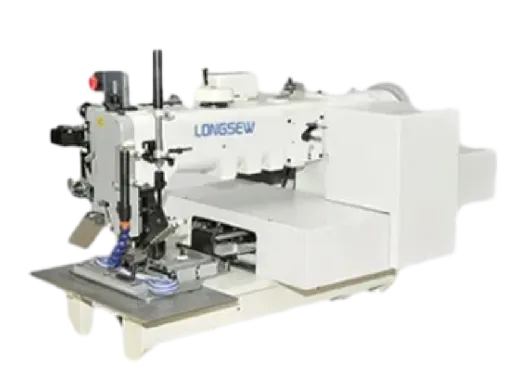High-Performance Overlock Sewing Machine for FIBC Bag Production
Understanding the FIBC Overlock Sewing Machine
In the world of textile manufacturing, efficiency and quality are paramount, particularly when it comes to the production of Flexible Intermediate Bulk Containers (FIBCs), commonly known as bulk bags. These bags are essential in various industries, including agriculture, construction, and chemicals, due to their capability to hold large quantities of materials. The FIBC overlock sewing machine plays a crucial role in the production of these heavy-duty bags, ensuring that they are durable, reliable, and capable of withstanding the rigors of transport and storage.
What is an FIBC Overlock Sewing Machine?
An FIBC overlock sewing machine is a specialized piece of equipment designed for sewing the edges of fabric in a manner that prevents fraying. This type of sewing machine employs an overlock stitch, which intertwines the thread around the fabric edges. This not only secures the seams but also provides a neat and professional finish to the bags. Overlocking is vital in FIBC production as it enhances the strength and longevity of the bags, ensuring they can carry heavy loads without tearing or failing.
Features and Advantages
FIBC overlock sewing machines are equipped with various features that optimize their functionality. High-speed stitching capabilities are essential for increasing productivity, as they allow for rapid production without sacrificing quality. Additionally, these machines often come with adjustable settings for stitch length and width, enabling manufacturers to customize their production based on specific requirements.
One notable advantage of using an overlock sewing machine in FIBC manufacturing is its ability to sew multiple plies of fabric simultaneously. Many FIBCs are constructed using several layers of woven polypropylene, and a robust overlock machine can handle this effectively. The result is a sturdy bag that meets industry standards for strength and durability.
fibc overlock sewing machine

Moreover, modern overlock machines are often designed with user-friendly interfaces, making it easier for operators to adjust settings and troubleshoot issues. This can lead to less downtime and higher productivity, which is especially important in high-volume manufacturing environments.
Applications in FIBC Manufacturing
The applications of FIBC overlock sewing machines extend beyond mere seam stitching. They are used for various functions within the manufacturing process, such as double-stitched seams for added strength and hems for improved handling. Additionally, these machines can be employed to attach labels, handles, and spouts to the FIBCs, thus enhancing their functionality and usability.
In industries where cleanliness and contamination prevention are critical, such as food and pharmaceuticals, the ability to produce FIBC bags that comply with stringent hygiene standards is vital. Overlock machines can help create seams that are less likely to harbor dust and contaminants, thereby ensuring the quality of the contents.
Conclusion
In conclusion, the FIBC overlock sewing machine is an indispensable tool in the manufacturing of flexible intermediate bulk containers. With its ability to produce strong, durable seams while enhancing overall bag quality, this equipment enables manufacturers to meet the growing demands of various industries. As the need for efficient and reliable bulk packaging solutions continues to rise, investing in high-quality overlock sewing machines will remain a priority for businesses looking to maintain competitiveness in the global market.
The integration of advanced technology in these machines, coupled with a focus on quality and efficiency, ensures that manufacturers can produce FIBCs that meet the diverse needs of their customers. As such, the FIBC overlock sewing machine stands as a testament to the evolution of the textile manufacturing industry, playing a pivotal role in facilitating the movement of goods across the globe.
-
Boost Production Efficiency with a Pattern Sewing MachineNewsAug.29,2025
-
Industrial Excellence with the Best Heavy Duty Sewing MachineNewsAug.29,2025
-
Precision and Power with the Best Pattern Sewing MachineNewsAug.29,2025
-
Reliable Bulk Packaging Starts With the Right FIBC Sewing MachineNewsAug.29,2025
-
Advanced Packaging Solutions: Elevate Productivity with Jumbo Bag Sewing Machine and Industrial Stitching EquipmentNewsAug.29,2025
-
High-Performance Solutions for Bulk Packaging: FIBC Sewing Machine and MoreNewsAug.29,2025
-
Maximize Efficiency with an Industrial Cylinder Arm Sewing MachineNewsAug.28,2025


























